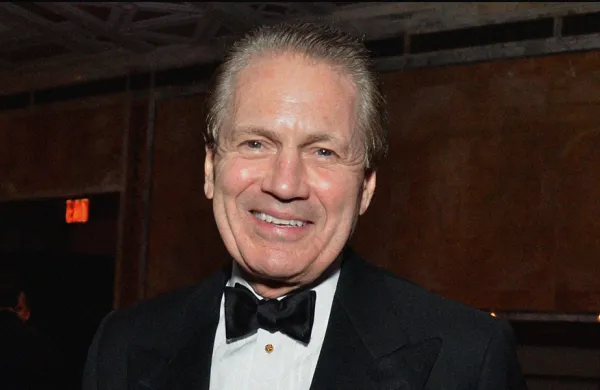When Two Sigma co-founder John Overdeck turned four, his parents gave him a Texas Instruments calculator for a birthday present. The young math whiz was ecstatic.
“I’m not normal,” said Overdeck with a laugh, recalling the gift.
Overdeck, PDT Partners founder Peter Muller, and Renaissance Technologies founder James Simons can trace their staggering career success — and their vast personal fortunes — to their talent for mathematics. On Tuesday night, the hedge fund legends paid it forward at a gala to raise money for the Museum of Mathematics, known as MoMath, which aims to “enhance public understanding and perception of mathematics,” according to its website.
Speaking on the sidelines of the event, held at Guastavino’s in Manhattan, Overdeck said that his parents — both mathematicians — saw early signs of mathematical talent in their son and encouraged it early. His father had him counting by 17s before bed each night, when Overdeck was just three.
Overdeck, who went on to earn a silver medal in the International Mathematics Olympiad in 1986 before co-founding quant hedge fund shop Two Sigma with David Siegel, chairs MoMath’s board. Overdeck’s wife, Laura, also runs a math-focused charity called Bedtime Math. The couple hope to help children overcome what he called “math anxiety,” which Overdeck said can be unwittingly instilled in young children by parents or teachers.
Not surprisingly, MoMath’s annual gala — this year dubbed the “Symmetry Soiree” — has a mathematical theme each year. Table signs at this year’s event scrapped the typical numeral format in favor of geekier clues telling attendees where to sit. Some were accessible to the layperson (“threescore”), while others were not (“corners on a truncated icosahedron”).
Simons, founder of the most successful quantitative hedge fund of all time and an early backer of the museum, chatted with reporters on the sidelines, with the caveat that he only wanted to talk about math and math education.
He had a lot to say on the subject, it turns out.
“We’re behind most other modern countries,” he said, when asked about the state of math education in the U.S. “Many of our teachers of math and science do not know very much math and science. Teachers aren’t as respected in the United States as they are in Germany or Switzerland or the Far East.”
That dearth of qualified teachers is a big part of why American students fall behind on standardized math tests, he added.
“You want a teacher who knows her subject matter, right? If you were going to one of these language schools to study French and your teacher was an Italian, but he said, ‘Not to worry, I really know French,’ you’d say, ‘To hell with that.’ You want a Frenchman to teach you French. You want someone who knows the field to teach you. We have to have more respect for teachers in the United States.”
He pointed to a project he founded in New York City called Math for America as a strong starting point toward rectifying the problem. Some 1,000 math and science public school teachers receive fellowships through the program; the fellows receive testing and additional training and are paid $15,000 on top of their existing salaries. The fellowships last for four years; if teachers do well, they’re invited to reapply and can serve for up to 20 years.
“They absolutely love this program,” Simons said of the teachers who participate. “And they stay in the field. The turnover [in math and science teaching jobs] is typically is very high. After all, if you know enough math to teach in high school and do a good job at it, you probably know enough math to work at Google, or Goldman, or something that begins with a G. So that pays much more and it drags people out of the classroom. These people who we pay $15,000 a year extra, it’s not a fortune. They could still make more at Google. But it makes them feel good, it makes them feel valued.”
New York state runs an identical program — “that happily, I don’t pay for” Simons joked — and he said he’d like to see the program go national.
Muller, who minted his own fortune as a proprietary trader at Morgan Stanley before starting quantitative investment firm PDT Partners, is also a musician who performs at the gala each year. He said that having something like MoMath when he was a child “would have been the coolest thing ever. I played my dad [in] chess, I got into number puzzles, I read math books, but having the tactile experience enhances that in a huge way.”
[II Deep Dive: The Quant Trader Singing His Heart Out]
After a brief chat with reporters, Muller took to the stage to belt out a musical parody written in honor of the evening’s honoree, Stephen Wolfram, the founder and chief executive officer Wolfram Research who is most famous for creating Mathematica, a technical computing system, and the Wolfram computing language. Wolfram published his first scientific paper at age 15 and in 1981 became the youngest ever person to win a prestigious MacArthur Fellowship.
Muller recruited the audience to help him perform “Wolfram of London,” set to the tune of Warren Zevon’s “Werewolves of London.” As Muller presented them with a microphone, attendees took turns attempting the famous howling in the chorus of Zevon’s original, with varying degrees of enthusiasm.
While the wealth of the gala’s famous hedge fund guests might be enough to motivate people to take up math, Simons said there are other reasons to study the subject.
“I spent four years as a code cracker working for the government. That was an interesting period in my life; they only hired mathematicians in this place,” he said. “It’s good to know mathematics. There’s lots of things you can do. You can go into finance, of course; nothing wrong with that. Knowing math is a good basis for almost anything you want to do. [It] teaches you how to think clearly.”






